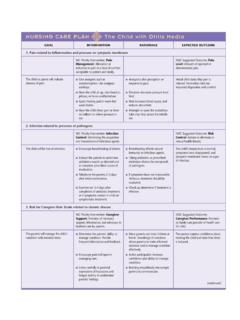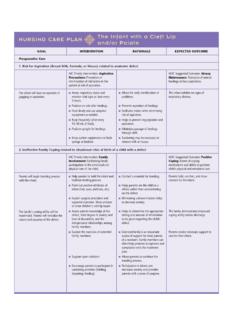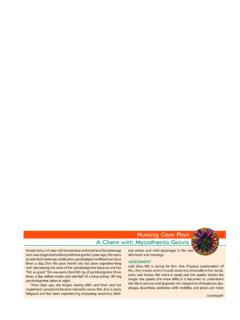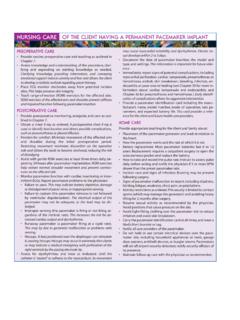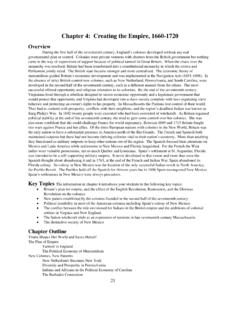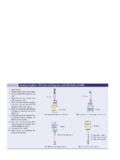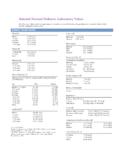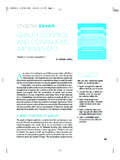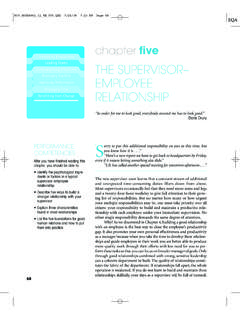Transcription of PART Topics in International Finance - Pearson Education
1 chapter 17 International portfolio Theory and DiversificationCHAPTER 18 Working Capital ManagementCHAPTER 19 International Trade FinanceTopics 7/1/11 2:31 PM Page W-1 LEARNING OBJECTIVES Separate total risk of a portfolio into two components, diversifiable and non-diversifiable. Demonstrate how the diversifiable and non-diversifiable risks of an investor s portfoliomay be reduced through International diversification. Explore how foreign exchange risk is introduced to the individual investor investinginternationally. Define the optimal domestic portfolio and the optimal International portfolio . Review the recent history of equity market performance globally, including the degreeto which the markets are more or less correlated in their movements.
2 Examine the question of whether markets appear to be more or less integrated chapter explores how application of portfolio theory can reduce risks of asset portfoliosheld by MNEs, and risks incurred by MNEs in general from internationally diversified activ-ities. In the first part of the chapter , we extend portfolio theory from the domestic to theinternational business environment. Then, we show how the risk of a portfolio , whether it bea securities portfolio or the general portfolio of activities of the MNE, is reduced throughinternational diversification. The second part of the chapter details the theory and applica-tion of International portfolio theory and presents recent empirical results of the risk-returntrade-offs of internationally diversified portfolios.
3 The third and final section explores inter-national diversification s impact on the cost of capital for the MNE. The chapter concludeswith the Mini-Case,Strategic Currency is not a case of choosing those which, to the best of one s judgement, are really the prettiest,nor even those which average opinion genuinely thinks the prettiest. We have reached the thirddegree where we devote our intelligences to anticipating what average opinion expects the averageopinion to be. John Maynard Keynes, The General Theory of Employment, Interest, and Money, PortfolioTheory 7/1/11 2:31 PM Page W-2W-3 chapter 17 International portfolio Theory and DiversificationInternational Diversification and RiskThe case for International diversification of portfolios can be decomposed into twocomponents: 1) the potential risk reduction benefits of holding International securities and2) the potential added foreign exchange Risk ReductionWe focus first on risk.
4 The risk of a portfolio is measured by the ratio of the variance of theportfolio s return relative to the variance of the market return. This is the betaof the port-folio. As an investor increases the number of securities in a portfolio , the portfolio s riskdeclines rapidly at first, then asymptotically approaches the level of systematic riskof themarket. A fully diversified domestic portfolio would have a beta of , as shown inExhibit illustrates portfolio risk reduction for the economy. It shows that a fullydiversified portfolio is only about 27% as risky as a typical individual stock. This rela-tionship implies that about 73% of the risk associated with investing in a single stock is diver-sifiable in a fully diversified portfolio .
5 Although we can reduce risk substantially throughportfolio diversification, it is not possible to eliminate it totally because security returns areaffected by a common set of factors a set we characterize as the total risk of any portfolio is therefore composed of systematic risk(the market) andunsystematic risk(the individual securities). Increasing the number of securities in the port-folio reduces the unsystematic risk component leaving the systematic risk componentunchanged. 1502040103010080604020 27%Total Risk = Diversifiable Risk(unsystematic)+ Market Risk (systematic) portfolio StocksTotalRiskWhen the portfolio is diversified, the variance of the portfolio s return relative to the variance of the market s return (beta) is reduced to the level of systematic risk the risk of the market of Stocks in PortfolioPercent RiskSystematicRiskEXHIBIT Risk Reduction through 7/1/11 2.
6 31 PM Page W-3W-4 part 6 Topics in International Finance 1502040103010080604020 27%12%When the portfolio is diversified internationally, the portfolio s beta the level of systematic risk which cannot be diversified away is of Stocks in PortfolioPercent RiskPortfolio StocksPortfolio of International StocksExhibit illustrates the incremental gains of diversifying both domestically andinternationally. The lowest line in Exhibit ( portfolio of International stocks) representsa portfolio in which foreign securities have been added. It has the same overall risk shapeas the stock portfolio , but it has a lower portfolio beta. This means that the inter-national portfolio s market risk is lower than that of a domestic portfolio .
7 This situationarises because the returns on the foreign stocks are closely correlated not with returns stocks, but rather with a global beta. We will return to this concept in the sectionNational Markets and Asset Performancelater in this Exchange RiskThe foreign exchange risks of a portfolio , whether it be a securities portfolio or the generalportfolio of activities of the MNE, are reduced through International diversification. Theconstruction of internationally diversified portfolios is both the same as and different fromcreating a traditional domestic portfolio . Internationally diversified portfolios are the samein principle because the investor is attempting to combine assets that are less than perfectlycorrelated, reducing the total risk of the portfolio .
8 In addition, by adding assets outside thehome market, assets that previously were not available to be averaged into the portfolio sexpected returns and risks, the investor has now tapped into a larger pool of International portfolio construction is also different in that when the investoracquires assets or securities outside the investor s host-country market, the investor may alsobe acquiring a foreign currency denominated asset. This is not always the case. For example,EXHIBIT Risk Reduction through International 7/1/11 2:31 PM Page W-4W-5 chapter 17 International portfolio Theory and Diversificationmany investors routinely purchase and hold Eurodollar bonds (on the secondarymarket only; it is illegal during primary issuance), which would not pose currency risk to investor for they are denominated in the investor s home currency.
9 Thus,the investor has actually acquired two additional assets the currency of denomination andthe asset subsequently purchased with the currency one asset in principle, but two inexpected returns and Equity numerical example can illustrate the difficulties associated withinternational portfolio diversification and currency risk. A investor takesUS$1,000,000 on January 1, and invests in shares traded on the Tokyo Stock Exchange (TSE).The spot exchange rate on January 1 is $. The $1 million therefore yields 130,000,000. The investor uses 130,000,000 to acquire shares on the Tokyo Stock Exchangeat 20,000 per share, acquiring 6,500 shares, and holds the shares for one the end of one year the investor sells the 6,500 shares at the market price, which isnow 25,000 per share; the shares have risen 5,000 per share in price.
10 The 6,500 shares at 25,000 per share yield proceeds of 162,500, Japanese yen are then changed back into the investor s home currency, the dol-lar, at the spot rate of $ now in effect. This results in total dollar proceeds of$1,300, The total return on the investment is thenThe total dollar return is actually a combination of the return on the Japanese yen(which in this case was positive) and the return on the shares listed on the Tokyo StockExchange (which was also positive). This value is expressed by isolating the percentagechange in the share price in combination with the percentage change in the currencyvalue In this case, the value of the Japanese yen, in the eyes of a investor, rose (from 130/$ to 125/$), while the shares traded on the Tokyo Stock Exchange rose total investment return in dollars is thereforeObviously, the risk associated with International diversification, when it includes cur-rency risk, is inherently more complex than that of domestic investments.

